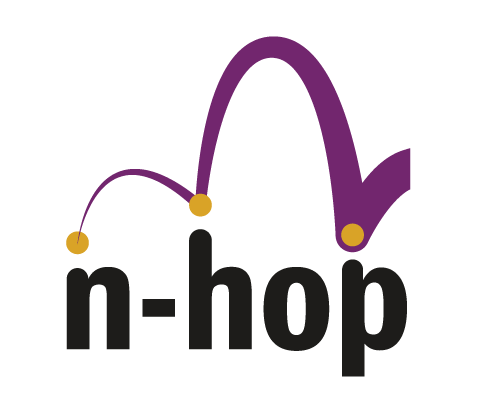Stephen Ho has been a practitioner and senior manager of the ICT industry for thirty-eight years. He is currently one of the founders and CEO of n-hop technologies Ltd, a technology startup based on fundamental research in Hong Kong. Stephen maintains an active role in the technology community; he is a Director of the Hong Kong Applied Science and Technology Research Institute Company Limited (ASTRI) and the Hong Kong Internet Registration Corporation Limited (HKIRC), a member of the Board of Governors of the Pacific Telecommunications Council (PTC) of the United States of America and the Honorary Chairman of the Communications Association of Hong Kong Limited (CAHK). Stephen holds a degree of Bachelor of Engineering – Honours Electrical from McGill University.
What network-related development would have the greatest impact in our industry?
Network coding promises to enhance network communication (in terms of throughput, reliability, security, flexibility, etc.) through the employment of coding at the intermediate nodes of the network. However, the progress of network coding applications has been hindered by their computational requirements. This is going to change in the coming years due to the prevalence of edge/fog computing, which provides the necessary computing power for the implementation of network coding. The next decade will see ubiquitous applications of network coding, in particular in multi-hop network communication and data storage.
With the invention of BATched Sparse codes (BATS codes), a coding scheme that employs linear network coding, the benefits of network coding can be realized in a variety of multi-hop wireless network configurations. A proof-of-concept, multi-hop wireless system employing BATS technology has been successfully installed and demonstrated in three columns of smart lampposts in the Smart City Initiative of Hong Kong.
BATS was invented by Professor Raymond Yeung and Professor Shenghao Yang of the Chinese University of Hong Kong. They are co-founders of n-hop technologies Limited.
How can telecommunications technologies help humanity?
Humanity first used smoke signals and drums to communicate in many parts of the world such as Africa, Asia, and the Americas. This clearly demonstrated a genuine need to communicate over distance for many reasons and applications. With telecommunications technologies, it is now possible to transmit two-way voice and data to users anytime, anywhere. This ability has helped us greatly in a wide spectrum of applications from weather forecasting, disaster relief, agriculture, farming, mining, rural communications, space exploration, scientific studies, commerce, or simply talking to one another.
The technology is instrumental in bringing humanity closer together, breaking down the boundary of time zones and long distances. The recent rapid advancement of technology and the wider proliferation of subsea cables, satellites, the Internet, and cellular infrastructures, have enabled us to live in a way that was never previously possible in the history of mankind.
Is it important for companies to continue to innovate their organizations or offerings, and why?
ICT has not only revolutionized the way we live and conduct commerce but has also dramatically increased the “clock rate” of the world. The speed of delivery of information is faster than ever before. It is because of this ease of accessing data and information that we are seeing new ideas, new innovative ways of conducting commerce popping up continuously and rapidly.
The democratization of information through technology has somewhat leveled the playing field in knowledge and information gathering but at the same time accelerated the need for organizations to swiftly adapt to this new challenge and to compete effectively in order to stay ahead. Organizations need to continuously innovate new ideas to speed up and optimize their operations with new thinking for their product offerings and services to compete effectively in this ever advancing technology era.
What value does PTC hold for you?
There are many important values of PTC that are relevant to us. PTC is a community of people not only practicing telecommunications but an ecosystem of the industry that comes from almost half the globe. It has always provided a great venue for people to meet and to exchange knowledge. PTC’s professionally organized conferences help to keep track of the latest in technology and trends, new ideas and learnings, and business models and applications.
The PTC Annual Conference is central and instrumental to facilitating new friendships and renewal of old acquaintances. It is also a great place for fostering business relationships.
How does PTC fit with your company’s goals or your overall career purpose?
Our company supplies telecommunications hardware and software products. PTC provides the perfect venue and setting for us to promote the technology that we have invented and meet the people who may be interested in using it.
Through conferences and seminars, we would love to share our latest research and findings of our BATS technology as well as network coding to members and patrons. We would hope to gain traction for more people being interested in the many applications that network coding may bring. In the commerce sphere, we would like to find and engage trade partners to adopt and promote our technologies to the telecommunications industry and community.
What advice would you share with current and future graduates interested in this field?
When I was a freshman at McGill University, one of my professors said telecommunications is the future, and that was 44 years ago. My advice to current and future graduates interested in this field is that this is probably one of the most promising and exciting disciplines of all times. Telecommunications is something that will live with us forever and the opportunities are boundless. There are ample opportunities in research and development, commercialization, and, indeed, a technology that continuously impacts the way we conduct commerce and enhances our way of life in the digital era.
It is a lifetime venture and much satisfaction and achievement can be derived from it. I hope it’s a career full of excitement and interesting stories to tell the next generation.
What has been a positive outcome organizationally or individually given the current state of the world?
Since I retired from my previous company in January 2020, I thought of doing nothing else but travel to places that I’ve never been. The pandemic has completely shattered that plan and I have been spending most of my time at home.
Being grounded in Hong Kong allowed me to reconnect with old acquaintances and the most unexpected thing happened. An opportunity arose from a professor who initiated and pioneered the work on network coding. Indeed, Professor Raymond Yeung of the Chinese University of Hong Kong will be receiving the IEEE Richard W. Hamming Medal this summer for his contributions on the subject.
I recognized that this may be an opportunity for a new paradigm in the landscape of digital communications and I am very excited about the invention of this technology. It is a wonderful opportunity for me to usher it into the industry. As a co-founder of n-hop technologies Limited, our mission is to introduce this new technology, BATched Sparse code (BATS code), into every network and device that can be benefited from its use.
About n-hop technologies Limited
n-hop technologies Limited is a technology company based on fundamental research. Two founders of the company invented the BATched Sparse code (BATS code), an advanced information coding scheme that promises to transform our way of implementing communication networks.
The technology has been tested and proven in the Smart City Initiative in Hong Kong. BATS enabled processors installed inside smart lampposts to transmit city data collected from sensors through multi-hop wireless networks to designated data centers for analysis.
The BATS technology can improve data integrity and fidelity. It can be applied to all forms of communications devices and networks including IoTs, routers, video streamers, power line communications, satellite communications, underwater communications, V2X, 5G, etc.









